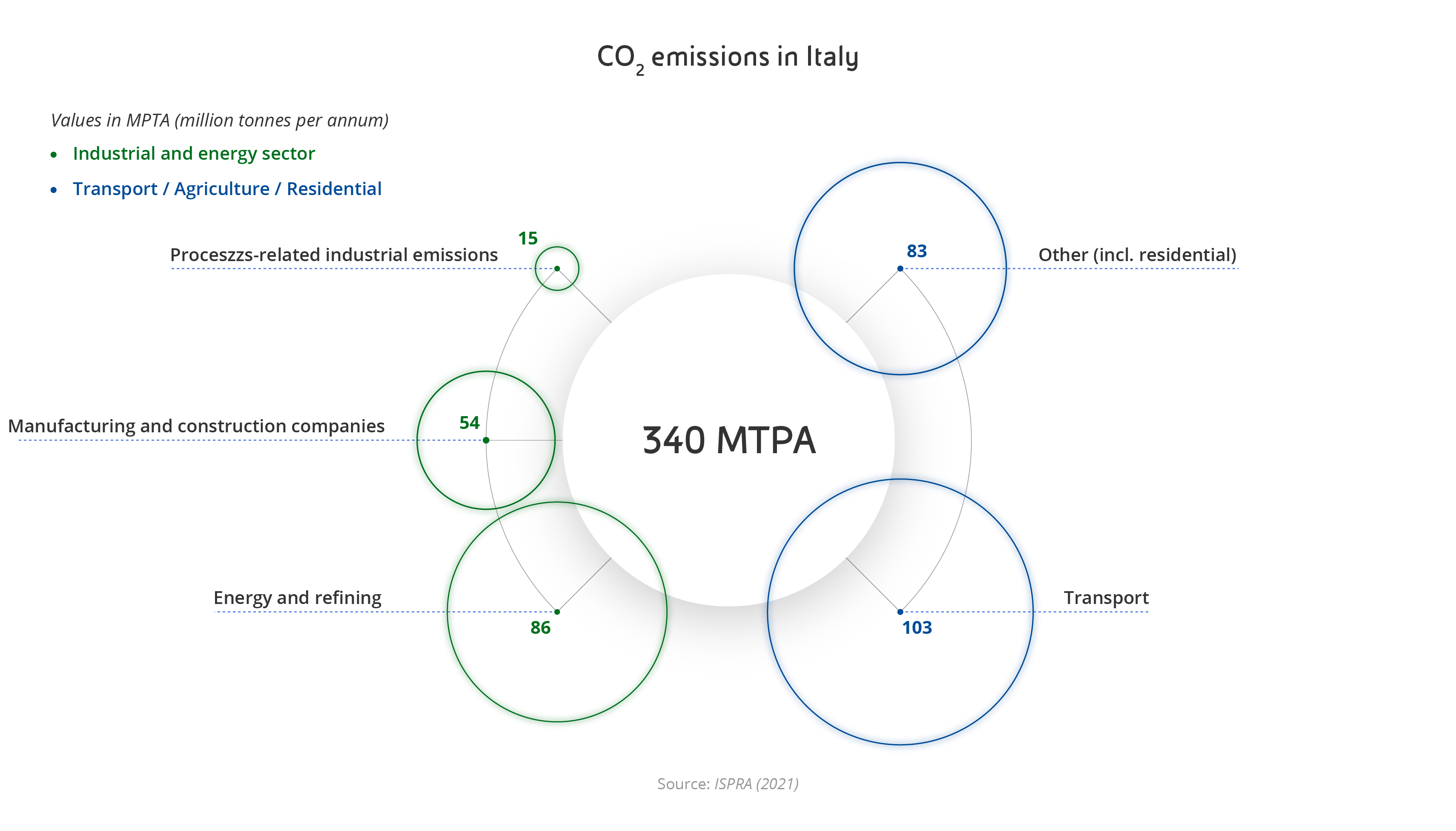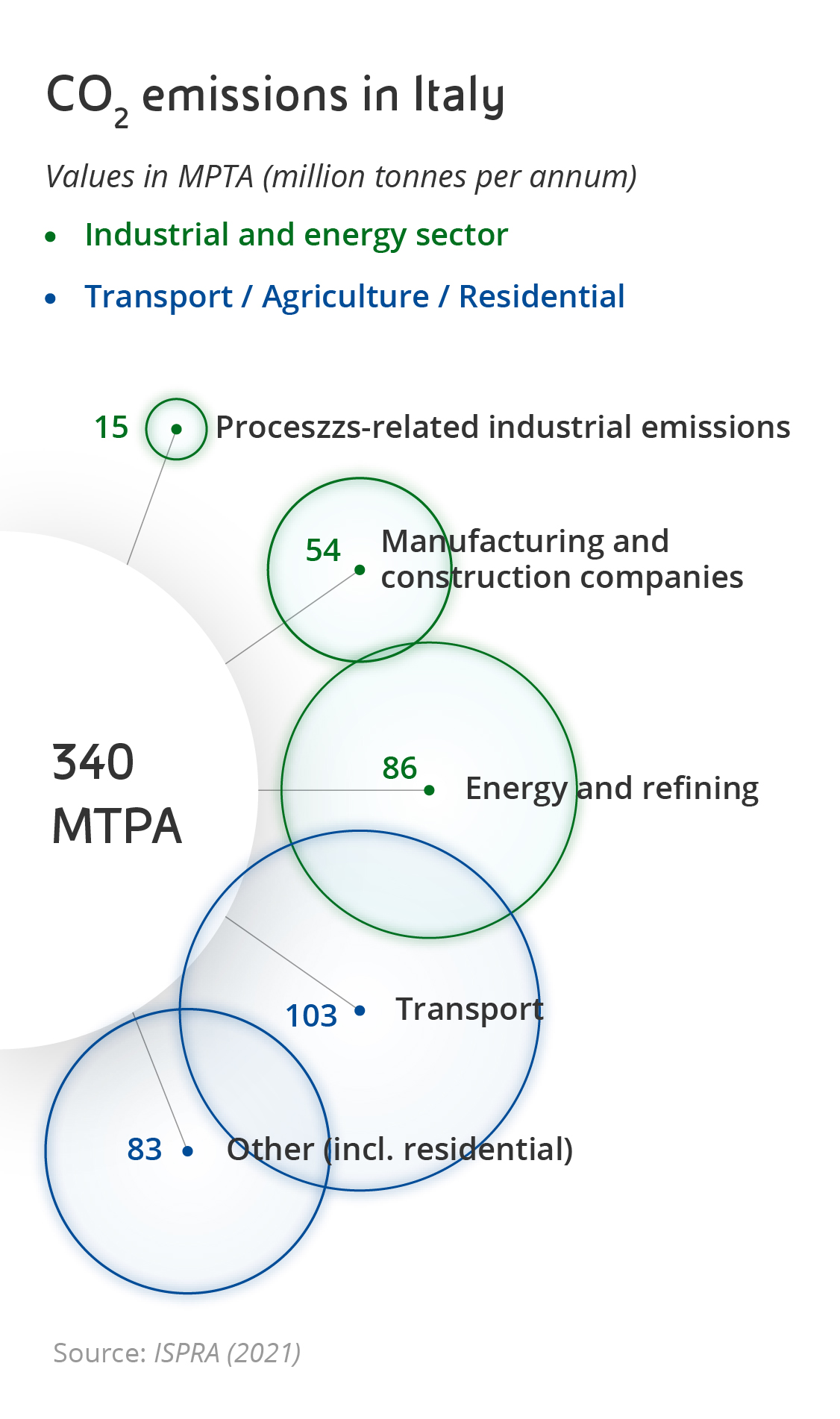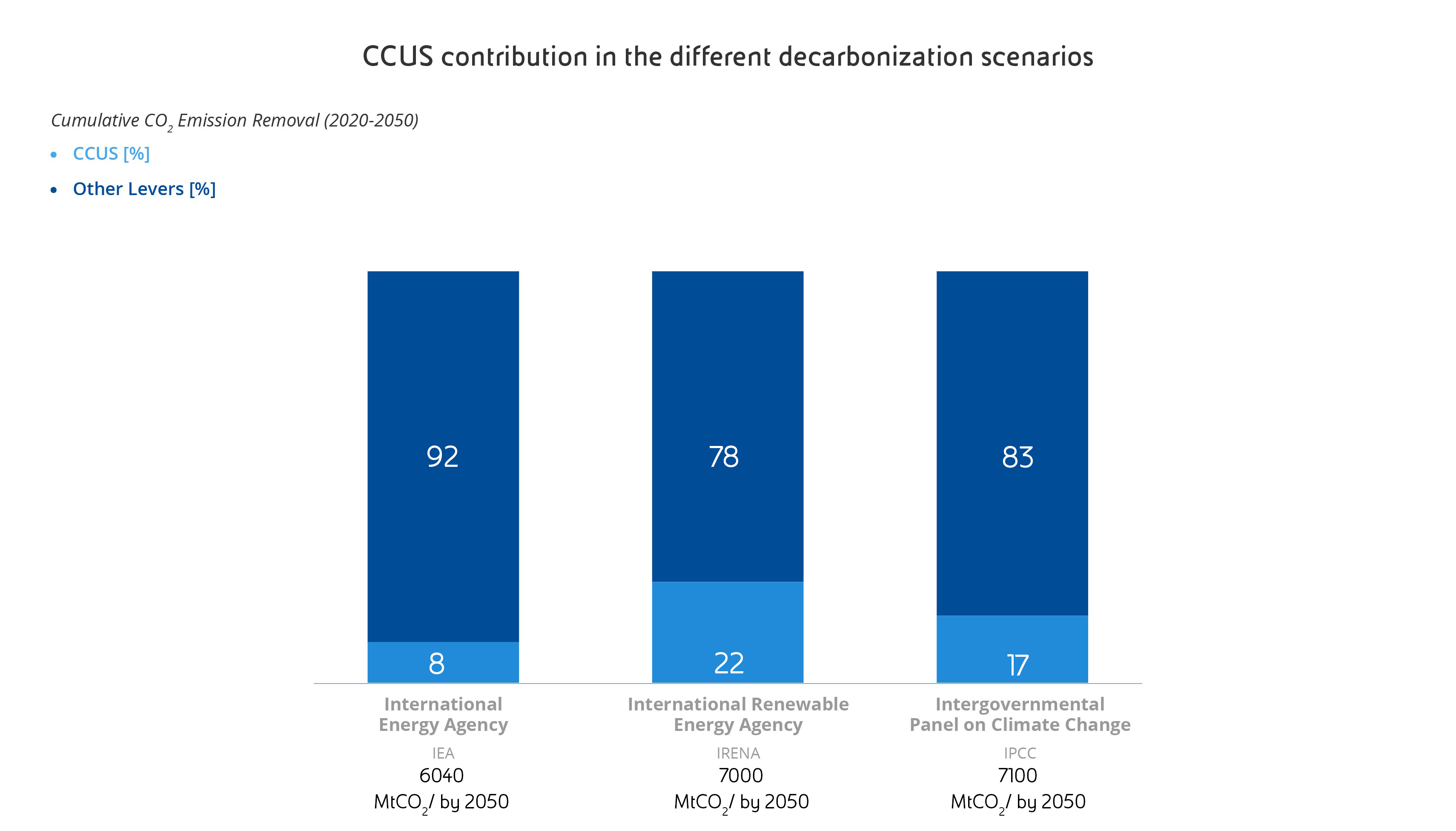Decarbonization is the term used to describe the gradual reduction in CO₂ emissions from human activities that is crucial to combating climate change. This transition requires a profound transformation of our production system, using all the technological innovations at our disposal, from renewable energy sources to advanced biofuels, and from bio jet fuel to blue and green hydrogen . In this scenario, Carbon Capture and Storage (CCS) is the most rapid and efficient solution to immediately reduce the footprint of what we call hard-to-abate sectors. These are industries where, due to their energy-intensive nature and production processes, there are no current solutions to effectively and economically reduce emissions. Sectors such as iron and steel, cement, chemicals, paper and glass fit this description. Not only are their energy requirements such that they cannot be fully powered by renewables, but their core manufacturing processes also release emissions by their very nature, regardless of fossil fuel consumption. In some cases, these process-related emissions form a large part of the total; for example, in cement factories, around two-thirds of CO₂ is produced by the calcination of limestone, a key stage in the production of cement. In 2021, Italy's building materials industry reported emissions of approximately 22 million tonnes (Mton) of carbon dioxide. Cumulatively, the hard-to-abate industries have a significant carbon footprint: in Italy alone, in 2021, they were responsible for about 68 Mton of CO₂ out of a total of 337 Mton, which represents 20% of total emissions and 42% of the industrial sector alone, which recorded 155 Mton according to the Italian Institute for Environmental Protection and Research (ISPRA, 2023 data). Considering the fact that modern technology allows us to capture more than 90% of the CO₂ contained in flue gases, CCS clearly offers a viable way to decarbonize hard-to-abate industries.
Our Channels
enioilproducts
Your business, our energy
Produtcs and solutions for business and customers Italy and abroad









